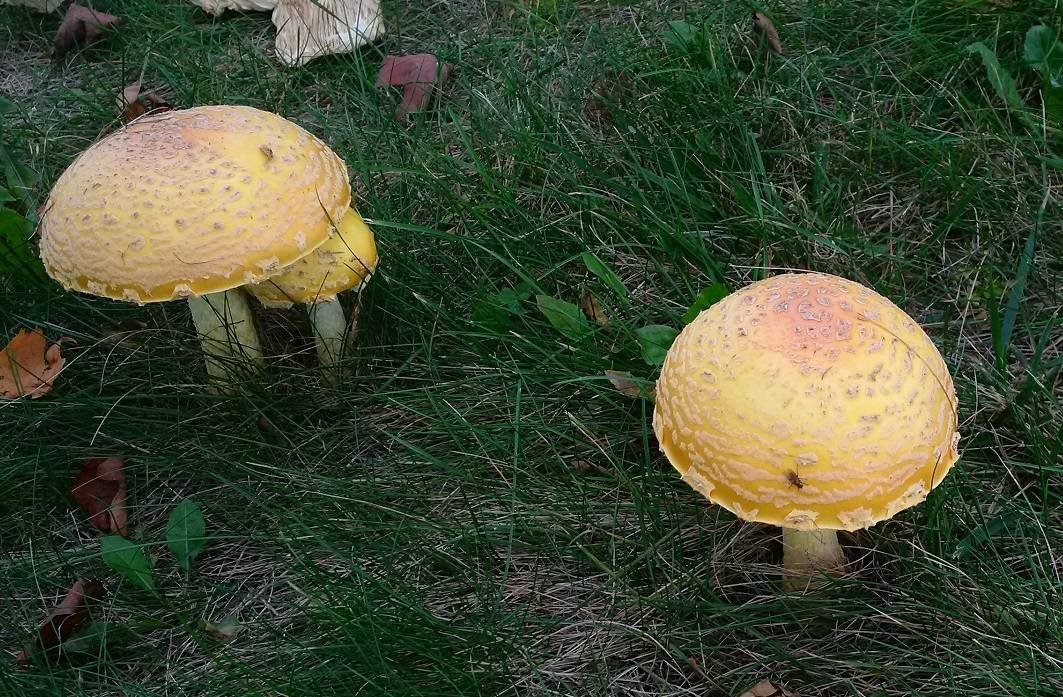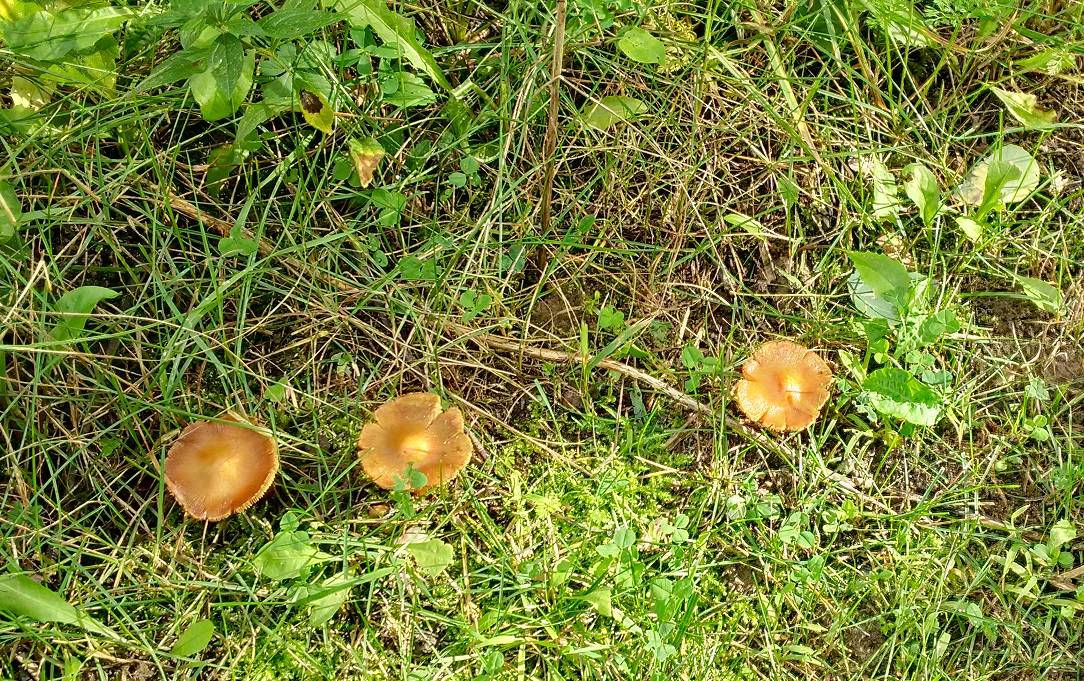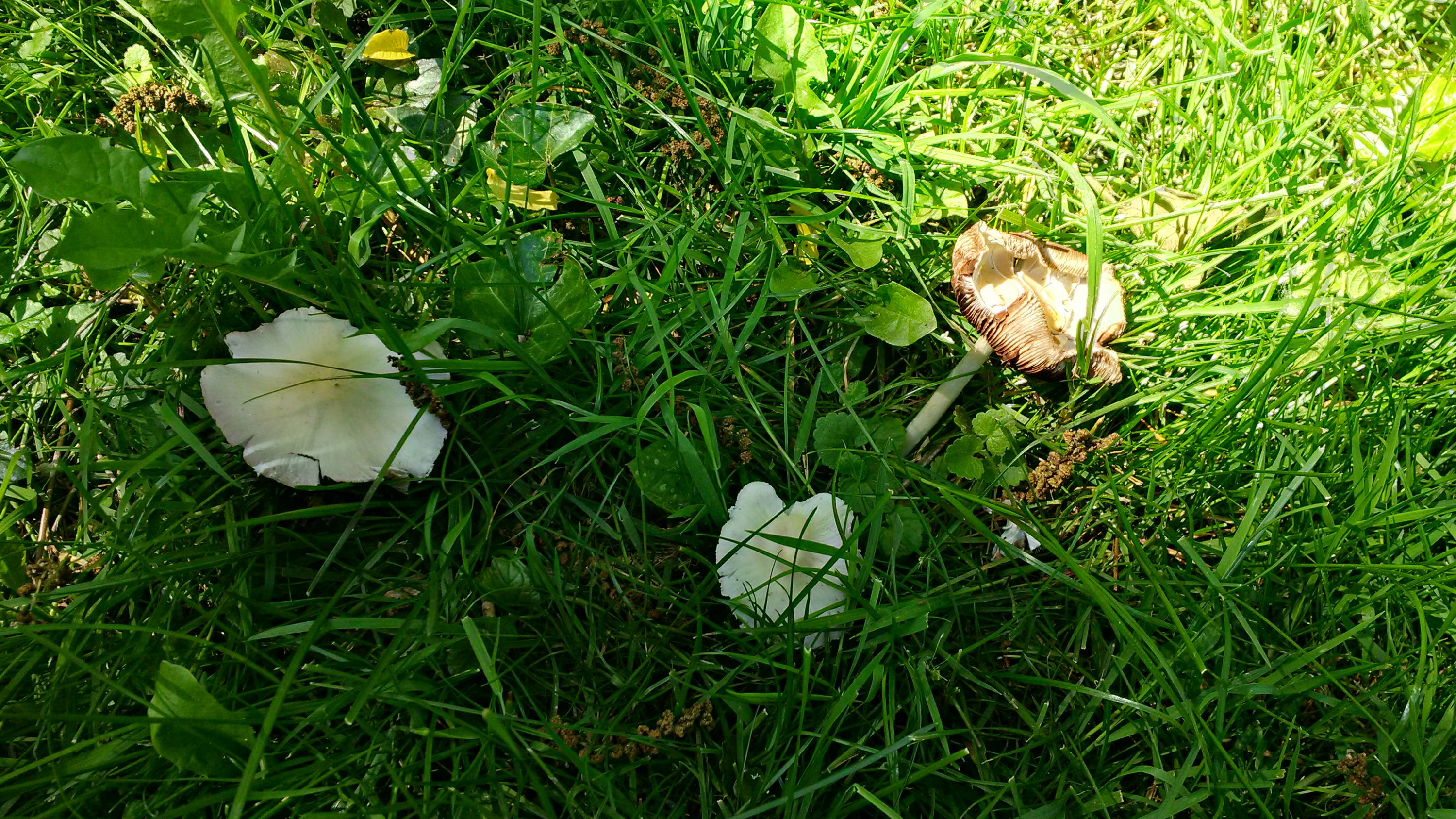
An easy-to-spot Amanita - doing good work for its tree host
Here's my picture of a beautiful group of Amanita muscaria var. 'guessowii' that I saw last October, in a lawn, beside a very happy windrow of Spruce. And if you look real close - you'll see a fly on this 'Fly Agaric'. These may not be good for people (DO NOT EAT this mushroom if you see one) - but - they are very good for the roots of their host trees. They are ectomycorrhizal partners of all Pine, Spruce, Fire, Hemlock etc. So if you see them - don't pick them - the mushroom cap is the final stage of the reproductive cycle of this valuable fungi. The mushroom cap doesn't last long, but each one produces billions of spores that will germinate in the spring and go on to assist their conifer hosts with finding water and nutrients in the soil. Ain't nature cool!
Amanita is not in Root Rescue Transplanter
This variety of Ectomycorrhizae is not one of the 9 species in our Transplanter formulation. We did not include any species that have reported toxic or psychotropic effects on animals (or people). But that doesn't mean that Amanita fungi aren't good for its tree hosts - they certainly are.
On the other hand...

Laccaria bicolor (working for the roots of a Poplar)

Laccaria lacata (working for the roots of a Spruce in my neighbour's yard)
Both of these hard-working (and edible) Laccaria species are included in the Transplanter formulation. The 'Bicolor Deceiver' was photographed by me in last fall. The Laccaria lacata pic is from my back yard; the spruce that is benefiting from it's help is actually in my neighbour's back yard (root systems ignore property lines).
About my lawn...
You'll notice that my lawn is not a monoculture of turf plants - there's fungi, and broad-leaf plants (including a nice crop of dandelions that flower every spring). In the 12 years that we've lived in this house, I've never applied a synthetic fertilizer - and no chemicals have been applied on our lot either. Most years, no fertilizers were applied - when I did - it was an Organic Granular Formulation. I have never - ever - watered the lawn.
The unattainable 'billiard table' of of turf
When comparing our lawn to some of our neighbour's, ours is not a 'perfect lawn'. I've long-ago shed the obsession to chase the unattainable billiard table of of turf. But - ours stays greener longer every summer - and our dog can run around like a maniac without concern about what she might pick-up on her paws (which she obsessively grooms after being outside). Also - I have my mower (a battery-powered Stihl) set at a Medium Mowing Height. The close-cropping of turf is not good for turf plants, they can self-seed when they like of you don't mow them too short. And raising the mower height allows for other types of flora (and Fungi) to take up residence in my lawn. Notably, the mushroom caps of the Laccaria (shown above) are below the height of my mower blades - so they are not harmed by the mow, and can ripen and shed their payload of spores. All of which helps my neighbour's Spruce tree. I'm a lazy gardener- I never rake-up clippings - the mower is set to mulch it all up - and turf clippings are about 3% Nitrogen, so why haul them from the lawn? BTW - my back yard is dominated by afternoon shade from a big old Walnut tree on our West property line. So there's competition for moisture, Juglone from the Walnut, and shade for 'lawn' to contend with.
All in all, I'm happy with my 'All-Natural, Flattish, Green Groundcover' (that a 'purist' would not call a 'lawn'). But - the neighbours look over the fence and ask me every August "why is your lawn still so green?" And these neighbours have an irrigation system (I don't).

